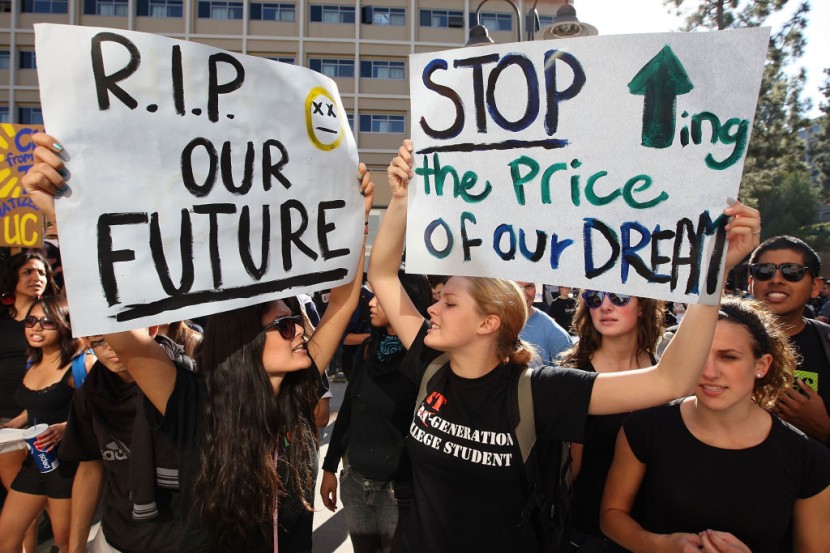A widespread confusion remains about the new stimulus package and student loans. The Senate approved the $1.9 trillion stimulus bill, which included a third stimulus check, unemployment benefits, and a clause making any future student loan termination tax-free.
Stimulus Bill Won't Cancel Student Loan Faster

Some have viewed the stimulus' final clause - tax-free student loan repayment - as raising the chances that Biden will now cancel student loans by executive order. Let's be clear, so you know what's going on:
You could save thousands of dollars if the student loans are canceled. You will be able to stop paying principal and interest by canceling any or more student loan balances. Second, you would be entitled to repay your student loans to stop paying further income taxes on the forgiven amount.
It's important to remember that tax-free student loan forgiveness is only valid until December 31, 2025. So, until Congress extends a conditional or indefinite extension, you'll need to terminate your student loans by the deadline by large-scale student loan waiver to be considered for tax-free repayment. According to Forbes, Biden supports allowing student loan forgiveness tax-free, whether by upfront termination or an income-driven repayment scheme, including Democrats in Congress.
Student loan cancellation
Although student loan repayment is tax-free, the current stimulus bill does not contain any student loan cancellation. Given his support for tax-free student loan repayment, Biden's decision not to revoke student loans by executive order had nothing to do with the tax status.
As a result, Congress's decision to make student loan forgiveness tax-free did not overcome an obstacle to implementing student loan termination by executive order. Since he doesn't think he has the legal right to do so, Biden said he would be unable to terminate student loans via executive order.
Biden claimed that he would consider canceling student loans by executive order and request a legal review to see whether he had the right to do so unilaterally. Income-driven repayment programs are also eligible for the tax-free provision. However, since most student loan borrowers must make monthly payments for 20 years (undergraduate student loans) or 25 years (graduate student loans), most borrowers will not benefit until Congress expands the tax-free status beyond December 31, 2025, or makes it permanent.
Read also: Senate Passes COVID-19 Relief Bill, What's Included, When to Receive Your Stimulus Check
What passing stimulus package means for student loans
Although the president is under pressure to terminate student loans in the aftermath of the pandemic, this stimulus bill will not do so. Student loan forgiveness, on the other hand, would be tax-free, as per Newsweek.
In the United States, nearly 45 million individuals have student loans. Some of them have income-driven repayment arrangements, which allow them to make contributions depending on a percentage of their taxable income. The outstanding debt is canceled after 20 to 25 years, and forgiven debts are counted as revenue. This could end in a hefty tax bill in the thousands of dollars. However, as part of the relief program, the Student Loan Tax Relief Act would reduce taxation on forgiven student loans for a short period.
The freeze on taxing forgiven student loans is set to last until 2025 under the American Rescue Package, but it may be extended after that. Biden declared in January that he would extend the ban on repaying federal student loans to at least October. Also, his executive order extended the forbearance on interest accumulation.
Read also: What Does It Take To Get the Stimulus Check of up To $1,400?
Will college students get a stimulus check?
There is one major difference from the last round of payments: college students are now entitled to accept them. As part of the $2.2 trillion Coronavirus Aid, Relief, and Economic Security (CARES) Act, the majority of Americans got a $1,200 stimulus check in March 2020.
On the other hand, adult dependents were not eligible for relief checks, which meant that most college students, many older persons, and other individuals who rely on others financially were not eligible. As a result, in the wake of a global recession, some of America's most vulnerable populations were left empty.
These same populations were unavailable for the second round of $600 relief checks passed in December 2020 as the pandemic intensified and death tolls increased. With the third round of checks, this was fixed, as per Elite Daily.
Read also: Will Illegal Immigrants Receive Third Stimulus Check?
© 2025 HNGN, All rights reserved. Do not reproduce without permission.








